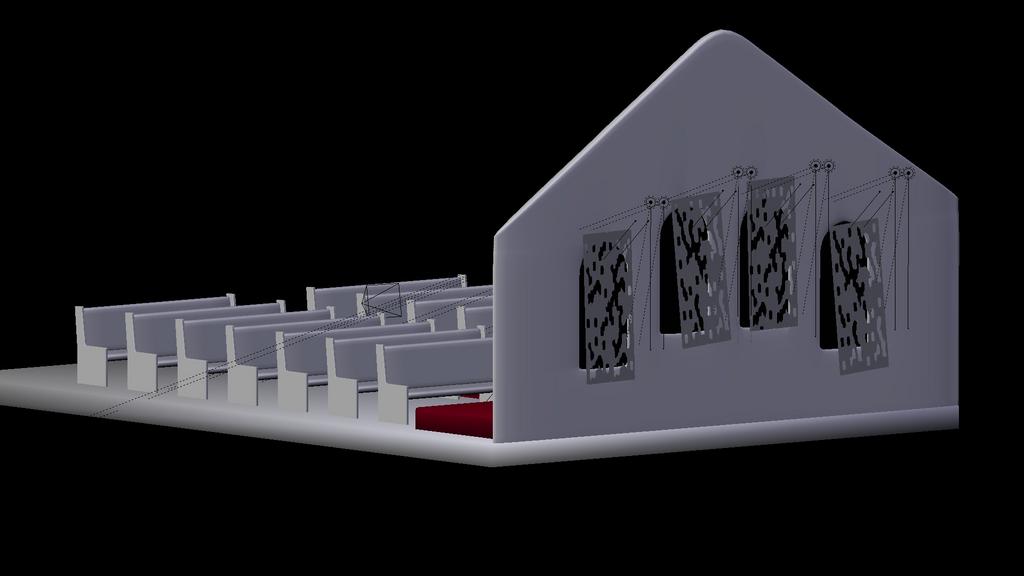So this is what I’m going for, only I’d like to not have to fake it. I just have a couple lights behind each window with different colors. This is obviously more halo than I’d actually want in the scene but I wanted to exaggerate it a little so you could better see the effect. I might render an animation with this technique, it’s about 95 hour render for the full scene at this point, so we’ll see. I might divide it across a couple computers and render it over my weekend.
did you just add halo to the spot light and may be add some spot ligth with colors?
looking nice
happy 2.5
It’s two shadow buffered spots per window with halos shooting through some geometry to break up the halo, Here is an opengl render of the the relevant parts of the scene.
Attachments
If you are going to do multiple computers, have you looked at 2.5’s network render? It is super simple to use, you can hookup all the computer in your house (if you have more than one).
Also, I can’t get, at all, the same effect from http://www.art-head-start.com/images/tutorial/vlspheres1c600.jpg at all. I can’t even get the light to go through the spheres and cast a shadow.
Maybe it can’t be done with Blender, with volumetric lighting, maybe you have to fake it.
Suggestion for the devs?
I haven’t had a chance to give the network render feature a try yet. I keep thinking I should give it a shot. I have several pretty decent intel core i7 machines that I can render on and about a dozen or so lesser computers, so I could set up a nice little render farm if the network renderer works well. I wrote some software in the past for 2.49 that let me send .blend files from home to work where it would render them across 5 computers, and send the finished file back to me, but I doubt it would still work in 2.5. At any rate I already started the render so I’ll have to wait until the next one to give network rendering a try, but I’ll definately do that. Thanks for the tip!
Yeah, no problem. I networked up all the computers in the computer lab at my school. It was pretty sweet 
31 machines, 4 GB RAM, not a bad processor on each. Better than mine, at least 
This may seem silly, but in 2.5 you can have a volumetric object. Therefore, all you need to do, it would seem to me, ( At work so cannot test!) is to extrude the parts of the glass down to the floor as shafts, then apply a volumetric texture of the appropriate colour. Actually making it light the floor is another matter, and you can just apply a picture of the window as a UV texture to the light.
There is nothing wrong with raytracing parts of the scene, either. You don’t need to raytrace everything, just the light and the floor.
One point with all of the renders though, speaking as an ex-lighting technician - light from the sun only goes one way. All of the rays of volumetric light in a scene must converge to a single point, - not one point for each window.
Matt
Hi Matt, I had considered using that technique, but really it just seemed more convoluted than what I was already doing, for practically the same result. As for the single point of light, I had thought of that but here was my logic for not following that rule. In my scene (at least in the indoor section) all the lights hitting the stained glass should be basically coming from direct sunlight at a single point. The stained glass is diffusing the light causing it to spread a little as it passes through the windows. As for the the side windows, I was thinking that the ambient light outside coming into a dark dusty room would still be enough to get some halo action going on. As I sit here in my office thats generally how things seem to be happening (minus the halos of course). I certainly have the strongest light coming through one set of windows, but all the others are letting in additional light, and the light on the floor is not corresponding to the orientation of the sun, except for the window in the direct sunlight. Am I thinking about this whole thing wrong?

